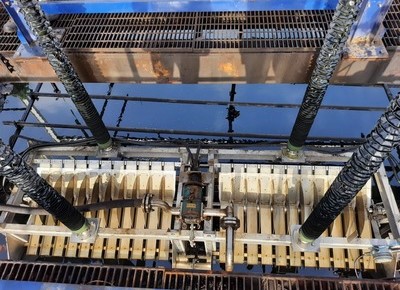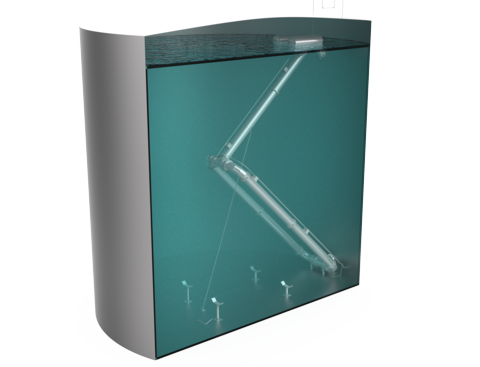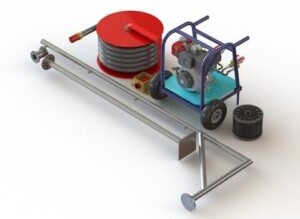Optimize Screening with Honeycomb Belt Screen

The large wastewater treatment plants use mechanized cleaning screen systems to remove large debris. These mechanized screens help improve flow conditions, screening capacity and reduce labor costs. Many types of mechanical screens are used in wastewater treatment plants. In this article, we will focus on the belt-type mechanical screen that incorporates honeycomb mesh.
What is a Honeycomb Belt Screen?
A Honeycomb Belt Screen restricts debris above 20 mm. It is a moving surface screen that consists fixed band of perforated screens and a mechanized cleaning system. The screen perforations are honeycomb-shaped. Pressurized water jets are used to clean the surface of the screen.
How does a Honeycomb Belt Screen work?
The Honeycomb Belt Screen is installed in the direction of the water flow. It is positioned at an inclined angle, partially submerged in the flowing water. The belt moves upwards at a constant speed while arresting debris. A motor, gearbox, shaft, and sprocket aid the movement of the belt in the upward direction.
The flowing water passes inward through the screens, arresting floating debris on the surface of the honeycomb screen. The honeycomb mesh is designed to restrict debris size to 20 mm & above. Thus, constant collection of debris takes place on the surface of the moving Honeycomb Belt Screen.
The honeycomb screen surface is cleaned using water jets. High-pressure water jets clean the surface from the inside of the screen. With the help of water jets and a brush, the surface is cleaned, and the screen is ready for the next screening cycle.
Some of the Unique Features of the Honeycomb Belt Screen are:
- 1. Mounting: The screen is pivot-mounted and can turn to the horizontal position for maintenance.
- 2. Design: The Honeycomb Belt Screen can be equipped with an overload protection device and a conveyor.
- 3. Operation & Maintenance: The design aids ease of operation & maintenance
- Material of Construction: The Honeycomb Belt Screen is offered in wide range of materials
- 4. Performance: The partially submerged, inclined position, continuous upward movement, and continuous screen cleaning makes it capable of handling high flow rates efficiently.
The Honeycomb Belt Screen working is different than other mechanical screens. In the case of the Honeycomb Belt Screen, the medium i.e. the screen that carries debris moves away from the flowing water, whereas in some of the mechanical cleaning systems, rakes are used to clean stationary screens. The movement of the belt clears the path for flowing water. Also, the cleaning process is carried out at the other end of the belt and does not interfere with the flow. Thus, the performance of the Honeycomb Belt Screen is enhanced as the flow is unhindered due to clogging or cleaning.
The Honeycomb Belt Screen finds application in the removal of metals, rocks, rags, eggshells, and similar materials that may hinder the operation of a treatment plant. They are ideal for deep channels, sewage treatment plants, wastewater treatment plants, chemical spills, floating trash removal, and oily water treatment. The Honeycomb Belt Screen requires minimal labor and is offered in a wide range of materials.
The material of construction, mechanized cleaning, and minimal human intervention make it safe for operation in hazardous environments. Honeycomb Belt Screen is easy to install, requires low maintenance, and can be customized as per your specifications.
Frequently Asked Questions
Q.1 How do belt oil skimmers differ from disk or drum oil skimmers?
A. Belt oil skimmers differ from disk or drum oil skimmers primarily in their method of oil removal; while disk and drum skimmers rotate to collect oil, belt skimmers utilize a continuous loop belt to efficiently remove oil from water surfaces.
Q.2 How does a honeycomb belt screen work to optimize screening?
A. A honeycomb belt screen optimizes screening by efficiently filtering liquids through a honeycomb structure, capturing debris and allowing only clean fluid to pass, thus enhancing screening effectiveness.





